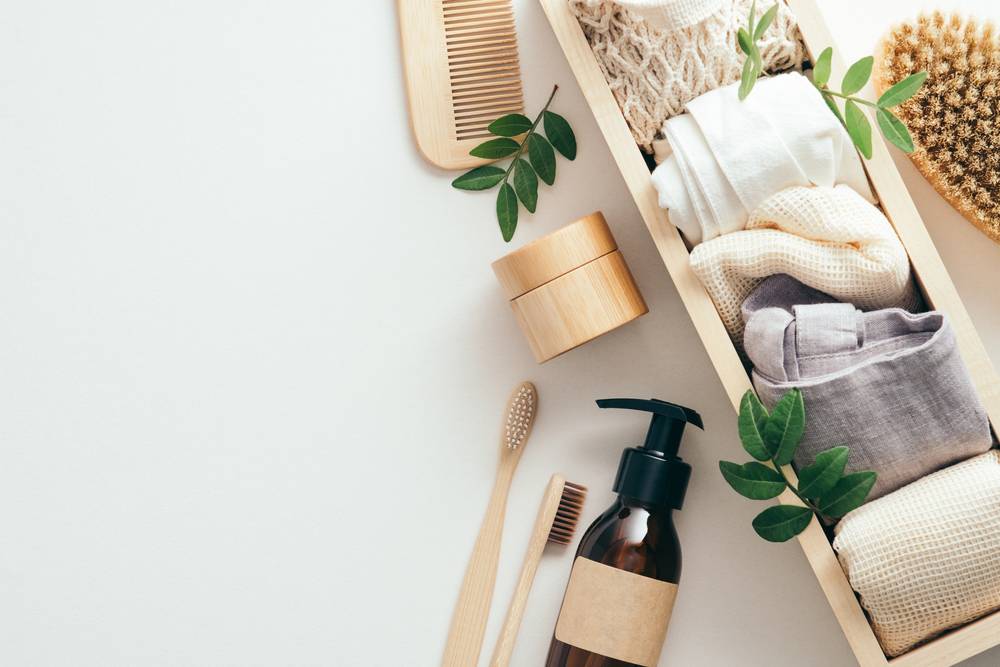Multiple organizations and countries acknowledge that the world is undergoing a climate crisis. To make significant progress toward positive change, corporations and global leaders should take climate action as soon as possible.
As an individual, you must make sustainable changes whenever you can, whether growing your own produce or going paperless. Another way you can cut down your ecological footprint is by making adjustments to your beauty routine. These changes aren’t as drastic as stopping the use of makeup products but as simple as adopting sustainable skincare.
You may be wondering how your beauty routine contributes to your carbon footprint. Your beauty habits impact Earth, from the time you take a shower to the moment you use wipes to get rid of makeup at night. The beauty products that you use have ingredients, packaging, and processing involved, which affects the planet in one way or another.
Here are a few beauty tips to keep in mind so that you can lessen your impact on the environment:
1. Fully use up beauty products
The best way to start a sustainable skincare routine is to use the products you already have. Buying a new set of eco–friendly products is pointless if you throw out a bottle that’s three-quarters full. Even if the products you have on hand aren’t exactly considered sustainable, you’ll be contributing to less energy consumption when you use them up.
2. Be intentional with beauty purchases
Think before you buy. Last-minute or on-a-whim purchases usually end up not getting used because you figured you don’t really need them or they aren’t for you. Go for multi-purpose products, products with refillable containers, or packaging-free products. Remember that for a sustainable beauty routine, one principle applies: the less, the better.
3. Go for sustainable options
Aside from packaging, it would be best to look for natural, non-toxic, and organic ingredients in a product. The products that most likely fall under these categories are vegan and cruelty-free. Check if they’re made from ethical practices and renewable sources. There are also eco-certifications you can spot for reassurance that the products are truly sustainable.
4. Practice skinimalism
Skinimalism or minimalist skincare is all about having a few good products in your routine. It’s the complete opposite of the exhaustive 12-step beauty routine. A multi-step regimen isn’t sustainable, as the more elements you have, the less likely it is for you to stick to it as life can get busy. When this happens, the products you have just bought will just go to waste.
Avoid overbuying products and trim down your routine with two to three items. A suggested combination would be a facial wash, toner, and moisturizer with SPF.
5. Buy in bulk
Whenever possible, you should buy your products in bulk. Rather than purchasing tiny bottles, you should get bigger versions of the product, such as a larger bottle of body lotion, makeup remover, or exfoliator. Compared to smaller products, you throw away less packaging when using big containers. Additionally, you may also save fuel because you travel to stores less.
Practice Sustainability in Your Beauty Routine
Some experts believe that we’re currently living in a climate emergency. On top of supporting movements that strive toward climate action, you should start making changes in your daily life. If that means incorporating mindful and sustainable habits in your beauty routine, then that’s a great first step.
Just remember that to be truly sustainable, you have to think of the bigger picture. Only buy the products you need and use them up fully before replenishing. You should get products with refillable or recyclable packaging and ones with eco-certifications. Once you’ve established a sustainable beauty routine, you can expand your environmental practices in other aspects of your life.
Penelope Martinez is a content marketer for Garnier Philippines. She’s a beauty enthusiast and an advocate of sustainability. In her spare time, Penelope enjoys traveling, listening to music, spending time with friends, and discovering new skills.
